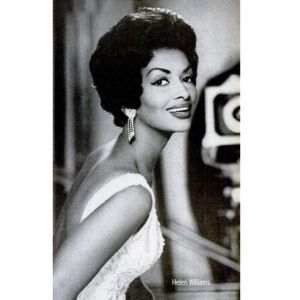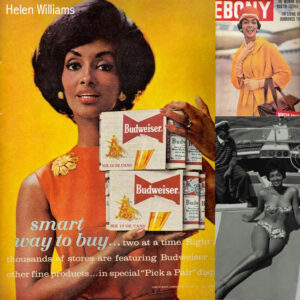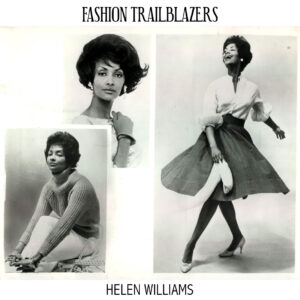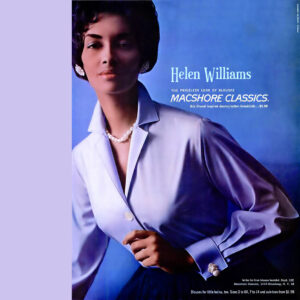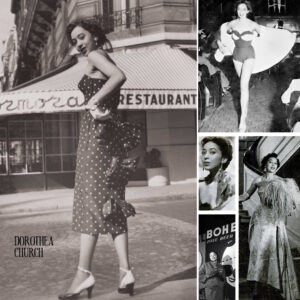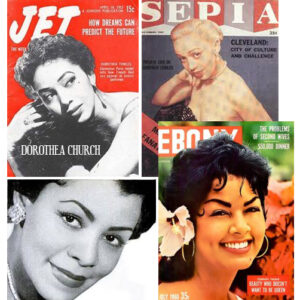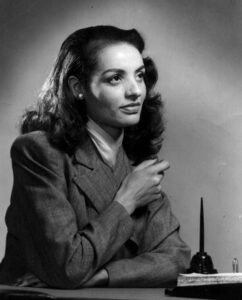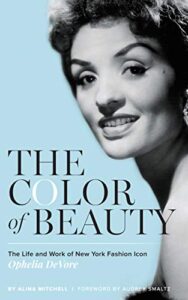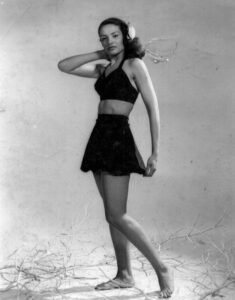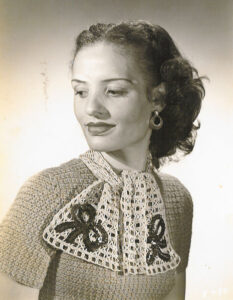Back in 2018 during, Agenda nodded to the history of fashion model trailblazers. This article ran in issue #4 for Black History Month.
For once I was not considered Black, African American, or Negro. I was just an American. —Dorothea Church remembers her modeling career in Paris in the early 50s.
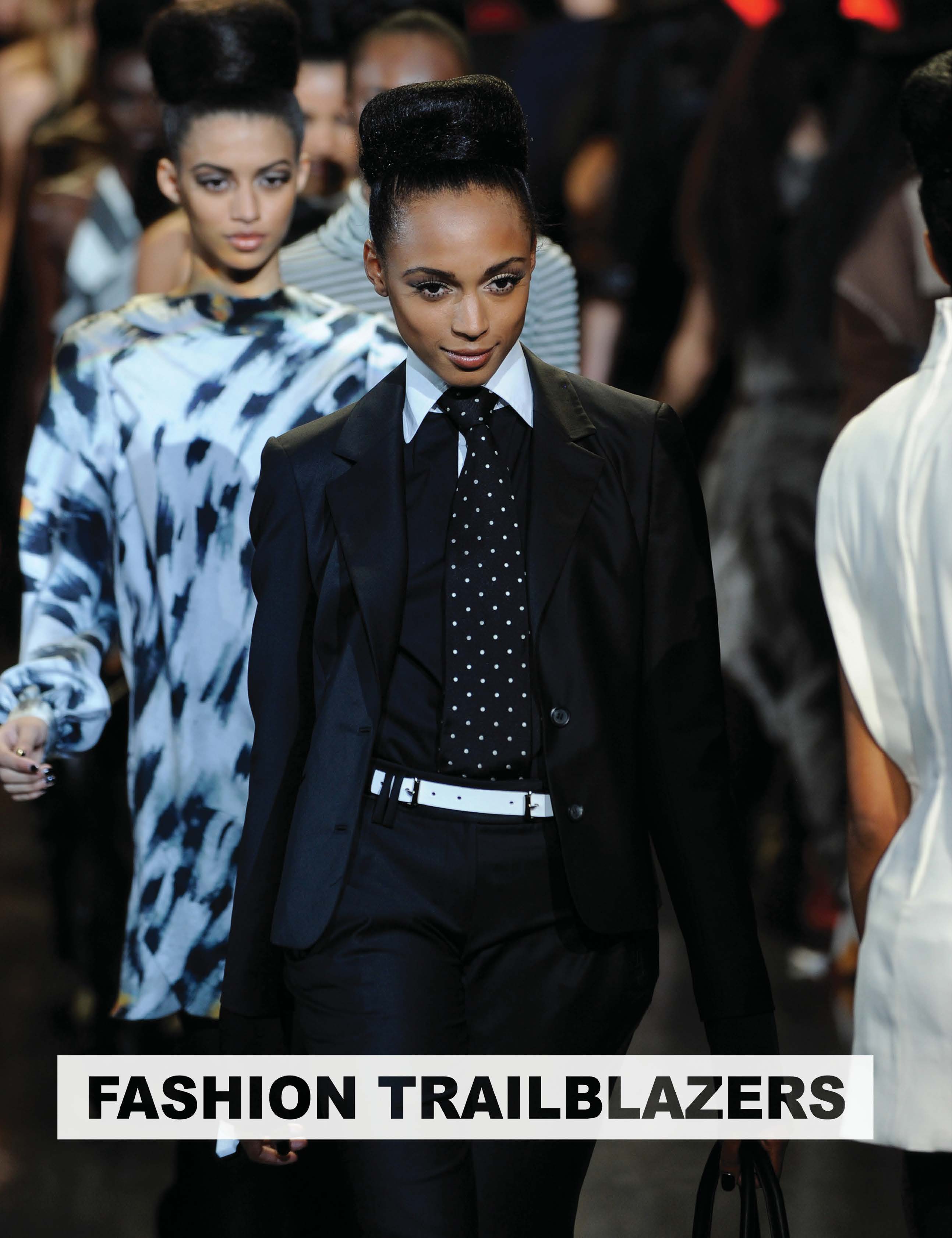
Imagine you are a young beautiful woman, long legs, striking bone structure, a real head turner. Now imagine you are looking through the advertisements and wondering if you could be one of the lucky models endorsing a product. Maybe it’s soap, or a department store, or a glass of milk. “Why not me,” you say to yourself. After all, you’re just as pretty. Today it would be no problem. You’d just go to your local modeling agency, bring your portfolio and maybe start test shooting right away. If you have what the advertisers are looking for, you’re sure to have a fair shot at a career in modeling.
Now imagine it’s 1945. You have everything the other models have, except one thing. You’re the wrong color. You’re in America where there is a racial divide. Legal segregation keeps you from entering that modeling agency. A sign reads, “No Coloreds Allowed.” You have two options: You walk away dejected or you break down the barriers of racism despite the consequences.
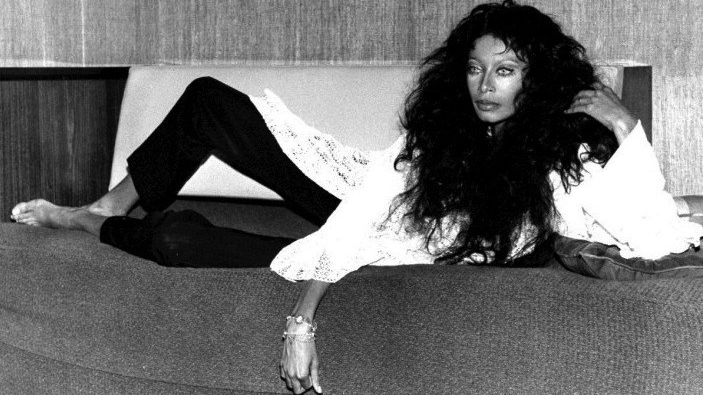
Many Black American models have tried and failed at a modeling career in the United States simply because of the color of their skin and the country in which they were born. Some have traveled to France and made it big in Paris, happy to be celebrated for their talent and not be denied an opportunity just because they were Black. But those returning home from Paris where they were revered, and race was never an issue, were vehemently met with hatred; and this was just one of the many hurdles Black American models faced in this country in the first half of 20th Century. I certainly did not want to leave out those fashion model trailblazers who also just happened to be American women and men of color; and deserve recognition for their accomplishments in this highly competitive, and at one time, racist fashion industry.
“Pledge that you will look in the mirror and find the unique beauty in you.” —Tyra Banks
Tyra Banks
As a runway model and the first Black model to grace the cover of Sports Illustrated, Tyra Banks is a hard act to follow. She was a Victoria’s Secret runway model from 1997 to 2005, and during that time was one of the highest paid models in the world. She appeared on the television The Fresh Prince of Bel-Air; in the film Higher Learning, Disney Channel’s Life-Size, and the film Coyote Ugly as Zoe. Other films include Love & Basketball, Halloween Resurrection, and television series Gossip Girl and Glee. Probably Tyra’s most notable accomplishment is the long running show America’s Next Top Model, where she executive produced. The show ran for a record 22 seasons.
Tyra has graced the covers of Elle, Vogue, Harper’s Bazaar, Seventeen, Teen Vogue, V, W, and Vanity Fair. She was also the first woman on the cover of GQ magazine. As an author, she co-authored a book entitled Tyra’s Beauty, Inside and Out and her book Modelland was a New York Times Best Seller; she won two Daytime Emmys for Outstanding Talk Show; and two Teen Choice Awards. Tyra continues to leave her mark every year since she started modeling at 15 years old. She continues to produce, start lucrative businesses, and gives back to the community via her charities and philanthropic ventures. A special note, Tyra graduated from Harvard Business school in the middle of her career. Something most celebrities would never have considered.
Shari Belafonte
Model/Actor/Singer: Shari Belafonte started her career as a model in the 1980s, becoming a successful cover girl model and appearing in commercials for Calvin Klein jeans. Later in her career, she appeared as an actress in film, television, theater, and was also a recorded artist. She currently has a leading role on the daytime soap opera General Hospital.
Jayne Kennedy
The Most Firsts: Jayne Kennedy was the first African American to win Miss Ohio USA (1970). She was the first Black woman on the cover of Playboy, and the first woman on the staff of CBS Sports NFL Today. She also starred in the 1977 NBC TV show Cover Girls.
J Alexander
The runway coach and reality star has been a longstanding consultant on America’s Next Top Model. He was signed to Elite Model Management as a teenager, has coached several famous models later in his career, including Naomi Campbell, Kimora Lee Simmons, Nadja Auermann, Claudia Mason, and Julia Stegner. Since 1991 after a short career as a model, J Alexander settled in Paris, France, and helped with casting and coaching models for Hervé Léger, Lars Nilsson, Bill Blass, Valentino, John Galliano, Chanel, Alexander McQueen, and Nina Ricci. In 2010, he authored Follow the Model: Miss J’s Guide to Unleashing Presence, Poise, and Power.
J Alexander continues to be an inspiration to aspiring models, and a leading expert on runway techiniques. He has appeared in every season of America’s Next Top Model. He has also appeared on international versions of Top Model, such as Canada’s Next Top Model, Holland’s Next Top Model, Korea’s Next Top Model, Estonia’s Next Top Model and Scandinavia’s Next Top Model.
I remember when I first met J Alexander in 2004 during fashion week in Los Angeles at Smash Box studios. It was when I first started Agenda, and we hung out. He was my first interview ever. J taught me his rating technique for runway models; a technique I still reference to this day when assessing talent. I read his book Follow the Model. It’s a great read, and quite relevant, even today.
Beverly Johnson
Beverly Johnson: Johnson rose to fame when she became the first African-American model to appear on the cover of American Vogue in August 1974. In 1975, Johnson became the first black woman to appear on the cover of the French edition of Elle. In 2012, Johnson was the star of the reality series Beverly’s Full House, which aired on the Oprah Winfrey Network (OWN). The New York Times named Johnson one of the 20th Century’s most influential people in fashion in 2008.
Donyale Luna
Donyale Luna (1945-1979): The First Black Model to Appear on the cover of British Vogue. In January 1965, a sketch of Luna appeared on the cover of Harper’s Bazaar. According to the New York Times, she was under exclusive contract to the photographer Richard Avedon for a year at the beginning of her career. An article in Time magazine published on April 1, 1966, “The Luna Year,” described her as “a new heavenly body who, because of her striking singularity, promises to remain on high for many a season. Donyale Luna, as she calls herself, is unquestionably the hottest model in Europe at the moment. She is only 20, a Negro, hails from Detroit, and is not to be missed if one reads Harper’s Bazaar, Paris Match, Britain’s Queen, the British, French or American editions of Vogue.
Naomi Ruth Sims
Naomi Ruth Sims (March 30, 1948 – August 1, 2009): She became one of the first successful black models while still in her teens, and achieved worldwide recognition from the late 1960s into the early 1970s, appearing on the covers of prestigious fashion and popular magazines. The New York Times wrote that her “appearance as the first black model on the cover of Ladies’ Home Journal in November 1968 was a consummate moment of the Black is Beautiful movement.” She also appeared on the cover of the October 17, 1969, issue of Life magazine. This made her the first African-American model on the cover of the magazine. The images from the 1967 New York Times fashion magazine cover and the 1969 Life magazine cover were exhibited at the Metropolitan Museum of Art in an exhibition entitled The Model as Muse. Sims ultimately decided to go into the beauty business for herself. Sims retired from modeling in 1973 to start her own business which created a successful wig collection fashioned after the texture of straightened black hair. It eventually expanded “into a multimillion-dollar beauty empire and at least five books on modeling and beauty”. She authored several books on modeling, health, and beauty, including All About Health and Beauty for the Black Woman, How to Be a Top Model and All About Success for the Black Woman, as well as an advice column for teenage girls in Right On! magazine.
Beverly Peele
Peele rose to fame in the late 1980s and 1990s, appearing mostly in Mademoiselle and Elle magazine. She appeared on over 250 fashion magazine covers.
Tyson Beckford
Known for being a Ralph Loren Model, hosted 2 seasons of Bravo program Make Me a Supermodel, and Vogue magazine named Beckford the greatest male model of all time.
Helen Williams
This fashion maverick was one of the most successful models of the 1950s and 1960s. Signed to Ophelia DeVore’s modeling agency, she went on to model in advertisements for Kodak, Bulova and countless other brands.
Chanel Iman
Relatively new to the modeling world, Chanel Iman is best known for her work as a Victoria’s Secret Angel. Vogue Paris declared her as one of the top 30 models of the 2000s.
“I hope that my presence on your screens and in the magazines may lead you, young girl, on a similar journey. That you will feel the validation of your external beauty but also get to the deeper business of being beautiful inside. There is no shade in that beauty.” —Lupita Nyong’o – Oscar winner and a Style Icon
Dorothea Church (1922-2006):
Church was the first successful black model in Paris. Christian Dior hired her to replace one of his regular models who was out on vacation. Her assignment with Dior led to her spending the next five years in France, modeling for Jacques Fath, Elsa Schiaparelli, Pierre Balmain, and Robert Piguet. Church recalled her experience in Paris of the early 1950s in a 2004 interview for Women’s Wear Daily: “For once I was not considered black, African American or Negro. I was just an American.” The French fashion establishment “treated you like a queen,” she said. In her 1998 book Black and Beautiful, author Barbara Summers quotes Church about her celebrity status in Paris at the beginning of the 1950s: “I got invited out all the time. I was the only black model in Europe and I just thought I was an international person.” When Church returned to the United States, Pierre Balmain would not loan her his designs for an Ebony Magazine shoot for fear that his white clientele would be offended, and that the magazine’s readership would not be interested in purchasing Balmain’s creations. In 1954 Church returned to the United States and began a tour of black colleges, showcasing her collection of Paris haute couture. She later signed as a model with the Grace del Marco agency in New York City and worked as a fashion commentator for radio station WOV.
Interesting Facts: In 1949, Dorothea T. Church followed her older sister Lois to France. After Arriving in Paris, she found new opportunities and decided to stay and become a model in France, making the decision to sell her return ticket to America.
Veronica Webb:
While living In New York, Webb pursued a modeling career and eventually became a spokesmodel for Revlon. She was the first black supermodel to win an exclusive contract for a major cosmetics company. In 1991 Webb made her feature film debut in Spike Lee’s Jungle Fever. Her film credits include Someone Like You…, The Big Tease, and Malcolm X. She also had a recurring role on the television show Damon and appeared on Just Shoot Me!, Becker and Clueless. In 2006, Webb appeared in the independent feature film Dirty Laundry. As a runway model she has modeled fashions from the collections of Azzedine Alaia, Isaac Mizrahi, Karl Lagerfeld, and Todd Oldham. Webb was named to American Vogue’s best dressed list three times. Webb has written essays and columns for Interview magazine, Paper Magazine (“New York City’s style guide to downtown cool”), Panorama (an Italian weekly news magazine), Details, Elle, The Sunday Times, The New York Times Syndicate, Conde Nast’s Cookie magazine, and Esquire. In 1995, she modeled for the first annual show of Victoria’s Secret. In 1998, Miramax Books published Veronica Webb Sight: Adventures In The Big City, a collection of autobiographical essays. Harvey Weinstein, chairman of Miramax, approached her while she was in line at the White House about publishing her essays as a memoir. Webb was the co-host of the first season of Bravo’s Tim Gunn’s Guide To Style. In 2010, Webb was named a member of the Eucerin Skin First Council to promote skin health.
Ophelia DeVore (1922-2014):
DeVore began modeling at the age of 16. As a fair-skinned person of African-American descent, DeVore would “pass” for Norwegian and gain contracts throughout Europe. In 1946, determined to create a new market for non-White women in the U.S., DeVore would establish The Grace Del Marco Agency. In the agency’s early days, it was a stepping stone for Diahann Carroll, Helen Williams, Richard Roundtree, Cicely Tyson, and others. In New York’s fashion business, the Grace Del Marco Agency was one of the few places non-White models could gain work. Her agency’s shows took place in churches, college campuses, and in the ballrooms of the Diplomat and Waldorf-Astoria hotels. Like many non-Whites in the mid-twentieth century, DeVore’s breakthrough came in Europe; specifically through the French fashion world. The initial impact took place at many of the Cannes Film Festivals during the 1950s and 1960s. DeVore also seized media for business equity by co-hosting ABC’s Spotlight on Harlem. In the agency’s later years, it was renamed Ophelia DeVore Associates, and then the Ophelia DeVore Organization. In 1985, DeVore broadened her enterprise globally to include Swaziland as a client.
I know I just touched the surface of those African Americans who’ve made an impact, but it’s a start. These are pioneers who paved the way and kicked open doors for all minorities in the world of modeling. Today it is not so odd to see all races in spreads and on covers of major magazine. Nor is it uncommon anymore for a minority to endorse household brands, become supermodels, or even head up their own agencies today!
Please follow us on Instagram as we unlock the time capsule of fashion trailblazers! Purchase AGENDA!

